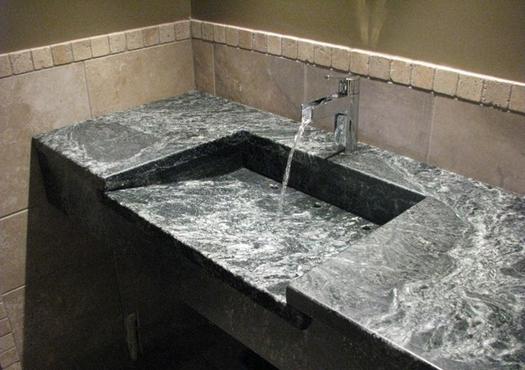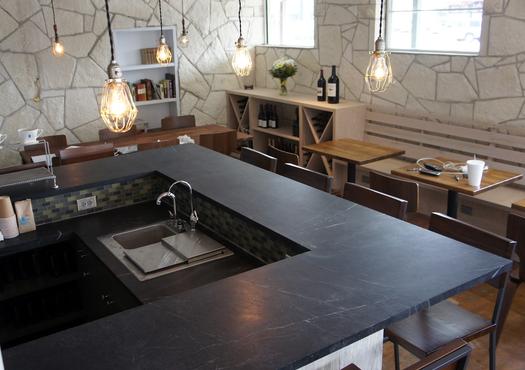Soapstone
- Soft and very easy to carve
- Nonporous
- Nonabsorbent
- Low electrical conductivity
- Heat resistant
- High specific heat capacity
- Resistant to acids and alkalis
- Countertops in kitchens and laboratories
- Sinks
- Cooking pots, cooking slabs, boiling stones
- Bowls and plates
- Cemetery markers
- Electrical panels
- Ornamental carvings and sculptures
- Fireplace liners and hearths
- Woodstoves
- Wall tiles and floor tiles
- Facing stone
- Bed warmers
- Marking pencils
- Molds for metal casting
- Cold stones



Soapstone is often used as an alternative natural stone countertop instead of granite or marble. In laboratories it is unaffected by acids and alkalis. In kitchens it is not stained or altered by tomatoes, wine, vinegar, grape juice, and other common food items. Soapstone is unaffected by heat. Hot pots can be placed directly on it without fear of melting, burning, or other damage.
Soapstone is a soft rock, and it is easily scratched in countertop use. However, a gentle sanding and treatment with mineral oil will easily remove shallow scratches. Soapstone is not suitable for use as a workbench top where it will receive rough treatment and where o sharpabrasive objects will be placed upon it.
Soapstone Tiles and Wall Panels
Soapstone tiles and panels are an excellent choice where heat and moisture are present. Soapstone is dense, without pores, it does not stain, and repels water. Those properties make soapstone tiles and wall panels a good choice for showers, tub surrounds, and backsplashes.
Soapstone is heat resistant and does not burn. That makes it an excellent wall covering behind wood-burning stoves and ovens. Fireplaces are also lined with soapstone to create a hearth that quickly absorbs heat and radiates it long after the fire is out. This property of soapstone was recognized in Europe over 1000 years ago, and many early hearths there were lined with soapstone.
